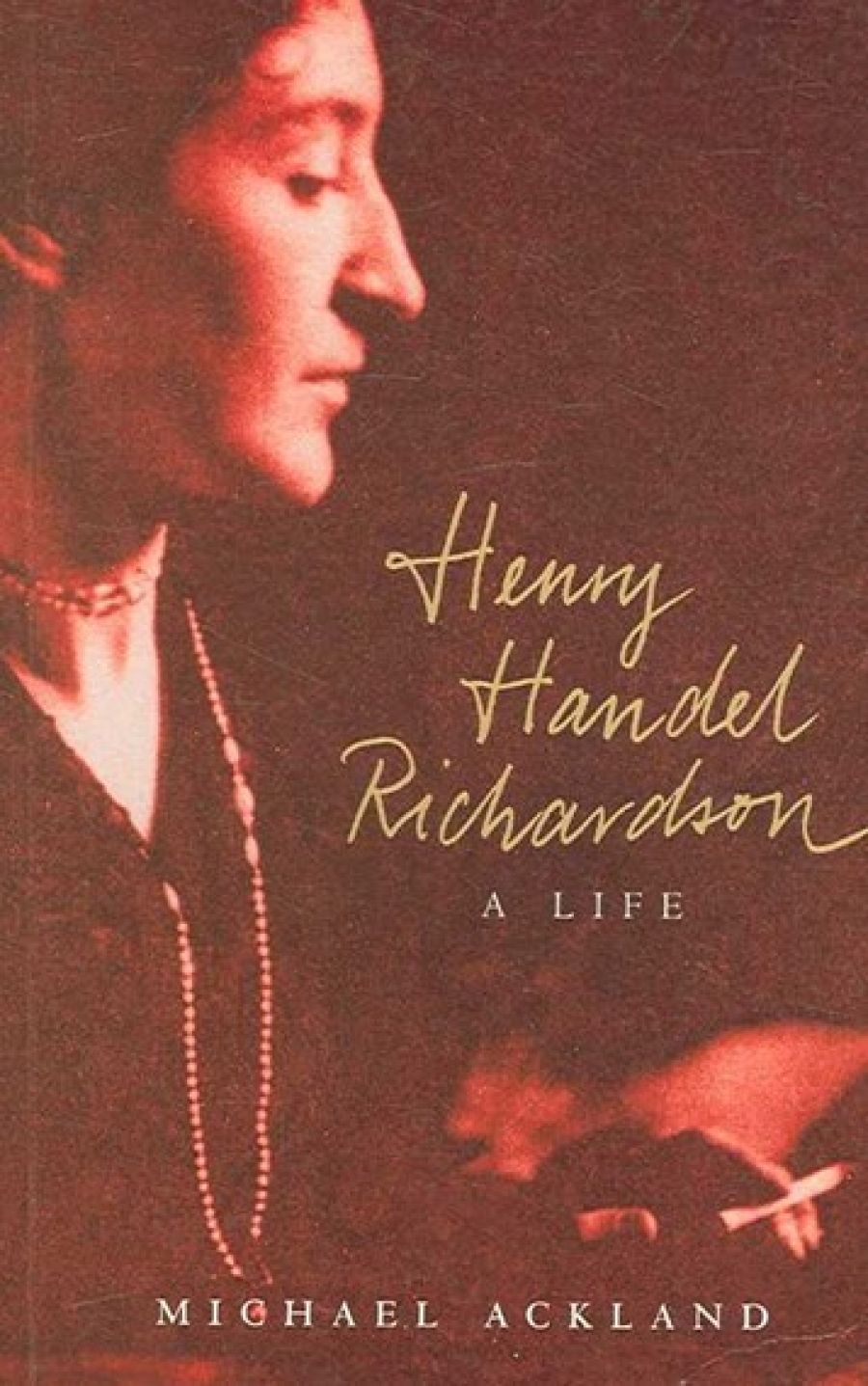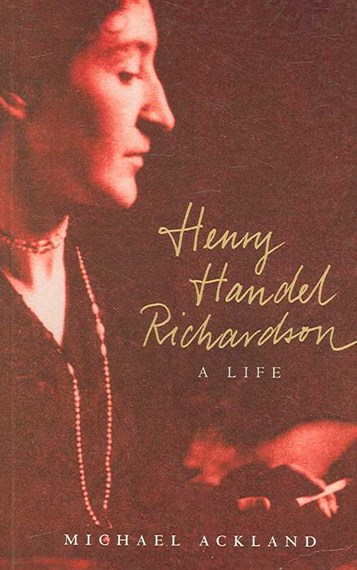
- Free Article: No
- Contents Category: Biography
- Review Article: Yes
- Article Title: The mystery of HHR
- Online Only: No
- Custom Highlight Text:
Henry Handel Richardson, author of iconic Australian novels The Getting of Wisdom (1910) and The Fortunes of Richard Mahoney (1917–29), has not fared well at the hands of her biographers. Axel Clark’s account of her early life, though kindly and well intentioned, could not seem to avoid the unfortunate conclusion that Ethel Florence Lindesay Richardson (1870–1946) was a rather unpleasant person. At the age of four, Clark tells us, she was ‘unusually showy and forward’, and it was all downhill from there. As a girl, she was ‘overly insistent and overbearing’; as she grew older, she became self-aggrandising and embittered.
- Book 1 Title: Henry Handel Richardson
- Book 1 Subtitle: A life
- Book 1 Biblio: Cambridge University Press, $59.95 hb, 326 pp
- Book 1 Cover Small (400 x 600):

- Book 1 Cover (800 x 1200):

Michael Ackland’s biography – the first complete account of Richardson’s life – at first seems to steer clear of such negative characterisations. He takes a sympathetic view of her childhood, blighted as it was by her father’s slide into insanity and his death from tertiary syphilis when she was nine. If she was petulant and hypersensitive, who could blame her? But he, too, succumbs to the lure of ready social judgments, designating the young Richardson as ‘perverse, cross-grained, splenetic’, in sharp contrast to her ‘better natured’ sister Lil. From a ‘greedy child’, he tells us, she grew into a ‘pampered egotist’. She was bitter, spiteful and secretive – and that was on a good day.
The problem is not that Ackland points out Richardson’s flaws. It is that he uses these judgments to close down speculation rather than to create intimacy, the invitation to which should surely be the biographer’s aim. Many writers – many non-writers, too – are difficult people. Katherine Mansfield, for instance, was by all accounts a highly unpleasant person to know: self-dramatising, manipulative and at times destructive. But her best biographer, Claire Tomalin, barely names these qualities. She is not concerned with making judgments but with getting inside Mansfield’s head, and getting her readers in there, too. Empathy and imagination are fully engaged – Tomalin’s own, and her readers’ – and the result is a complex, contradictory portrait of a fascinating woman. Ackland does not inhabit his subject in this way. Despite his meticulous research, he never really gives us any sense of what it was like to be Richardson. Admittedly, his style is quite different from Tomalin’s – his gift is for scholarship rather than storytelling. But in the first half of the book, at least, uncovering instances of Richardson’s deviousness and self-delusion seems to become an end in itself, rather than a way of understanding her better.
Having painstakingly established that Richardson was egotistical, tyrannical and neurotic, Ackland then seems to let the matter drop. After her marriage, she seems to have settled down to an exemplary life, adored by her husband and beloved by her sister, her few close friends and her servants. She gave her nephew a home while he was attending school, and was a selfless benefactor to Olga Roncoroni, who became her devoted companion. She got involved in first-wave feminism – though not as involved as Lil – and, after World War I, with spiritualism. Disarmingly, she loved cats, having as many as five at one time. Are we to infer that marriage to George Robertson, talented scholar and professor of German literature, tamed this shrew?
Ackland’s take on her marriage is conventional. He focuses on the many interests that Richardson and Robertson had in common, their developing friendship before marriage and their mutual affection, support and companionship after it. But he passes quickly over their sexual relationship. Others have questioned whether the marriage was ever consummated. Richardson had determined never to have children, and she kept her vow. Contraception at that time was unreliable, even dangerous. Did Richardson stipulate that the relationship be non-sexual? There is plenty of evidence to suggest that she was sexually attracted to women – from her teenage crush on a school friend, to her obsession with Italian actress Eleonora Duse, to the lesbian-themed stories she wrote. If she also had a distaste for sexual relations with men, a strictly companionate marriage would have suited her well. It is less clear why George might have been interested in such an arrangement.
In the absence of solid evidence, these are, necessarily, matters for speculation, and Ackland by and large declines to speculate. This impoverishes his account, for, in the end, biography does, or should, involve an imaginative leap into the life of another – one that is thoughtful, well grounded and intelligent, but a leap nevertheless.
There are all kinds of interesting snippets in this book – for instance, Richardson was a demon on the tennis court, loved to hike, and was convinced there was a poltergeist in her country house – and some compelling bits of narrative. But ultimately, we never get a clear sense of who Richardson was. We never see from her point of view. Now that all the facts are on the table, Richardson needs a biographer who is truly fascinated by her, and who will richly communicate that.


Comments powered by CComment